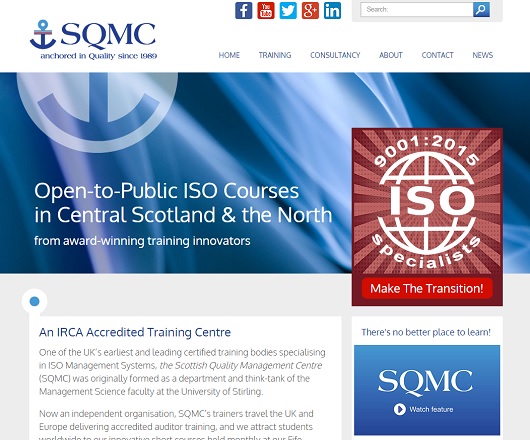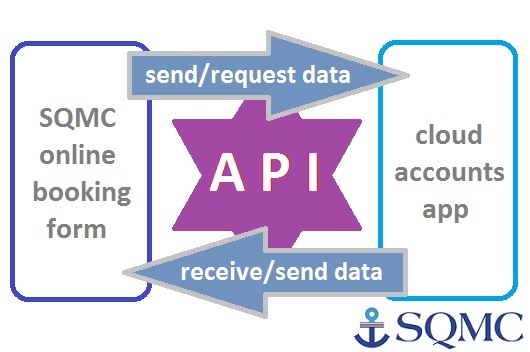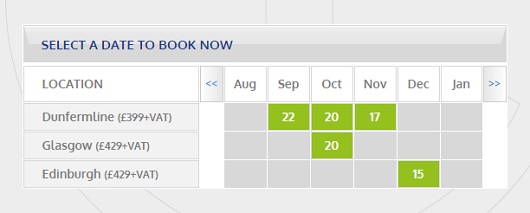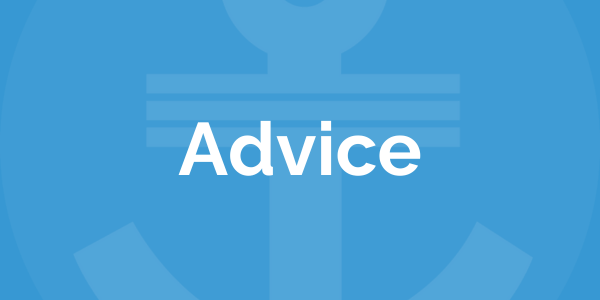5 customer-focused advancements to consider for your company website
 Kenny Hannah
·
7 minute read
Kenny Hannah
·
7 minute read
Have you noticed how – as customers – we are becoming more and more accustomed to making online purchases after first receiving a more tailored sales process?
An obvious example of this service personalisation is found with Amazon, which makes clever use of cookies (more on that later) and algorithms to learn about your tastes, preferences and interests. It then ‘suggests’ items it feels you might fancy parting with your cash for. And (for me, at least) the results are sometimes spookily accurate!
In the beginning…
Market leaders understand that customer care begins prior to the sale. Possibly days, weeks, or even months in advance, depending on the type and cost of the product or service.
"Customer care begins prior to the sale.
Possibly months in advance..."
Case in point: I often receive enquiries from self-funding students seeking to enhance their CV with a recognised ISO auditing qualification; and, perhaps due to work patterns or grant applications, it’s not unusual for a casually-inquisitive customer to take up to a year after I’ve first advised them, before they get back to us, ready to enrol on their course. During that lengthy period, I’ll provide further advice if asked, or suggest alternative options to correlate with our customer’s changing personal targets.
Customer Relationship Management (CRM) is evolving
At the Scottish Quality Management Centre (SQMC), we manage our relationship with contacts through records of previous correspondence, so that our customers find they don’t have to keep repeating their story and requirements each time they call us with more questions. It’s a simple concept, and certainly not a new one. But it’s how it has begun to cross over into automated e-commerce sales mechanisms that is becoming increasingly pertinent to prosperous, future-proof businesses.
A report published by customer intelligence outfit, Walkers, indicates that within 5 years, the typical customer “will expect companies to know their individual needs and personalise the experience.”
That brings with it a host of issues to be considered by the companies, as they invest and innovate to keep their noses in front of their competition; not least data security!
Opportunities for Improvement (O.I.)
And so, in the spirit of ‘thinking out loud’, and hopefully helping some customer-focused readers of our Insight column, I’m going to reveal my top 5 ‘opportunities for improvement’ which we’re systematically addressing behind the scenes at SQMC, to help QualityAuditor.co.uk retain a credible torchbearer position in its sector, through 2020 and beyond...

A screengrab from the Scottish Quality Management Centre's homepage (site version 6.4.4)
O.I. # 1: Customer account access
This year, we developed and installed secure log-in access to customer accounts, in recognition that over 65% of our sales come via our website. While still in beta, and rudimentary in the information it provides the customer at the time of writing this article, I have in mind the long term scalability of the service, and value and convenience it will bring to our clients.
"Giving the customer access to records of previous purchases, order statuses, invoices, receipts, et cetera, empowers them to review – on demand – administrative data which can make their job quicker and life a little easier."
Giving the customer access to records of previous purchases, order statuses, invoices, receipts, et cetera, empowers them to review – on demand – administrative data which can make their job quicker and life a little easier. This functionality typifies a service-centred approach to business, and it’s this level of user experience that could be the deciding factor when the customer chooses their supplier.
Count the cost
However, the implementation of such a system can be extremely complex. It may intertwine with your control of documents and data stored externally to your website’s server, such as stock inventory, picking lists, courier correspondence, or (in SQMC’s case) audit reports, exam results and certification records.
Therefore, it’s vital to give serious consideration to the practicalities of offering this service to your customers. How feasible would it be for you to migrate certain data into a cloud-based system? Do you have the financial and human resources to see the migration through to the end? Providing inaccurate information, for instance, would be a nightmare; causing more harm than good. And a thorough risk assessment is advisable, to ensure you can provide a high enough level of security to the details your customer shares with your organisation online.
O.I. # 2: Create an API
(to link 3rd party accounting software to our online booking form – for some, a precursor to the functionality of O.I. # 1)
There is a plethora of electronic bookkeeping products on the market. SQMC use (and I’d genuinely recommend) the cloud-based offering from British company, KashFlow. One reason that we ditched our overly-complex Sage package for KashFlow’s software as a service (SAAS) solution five years ago was they provide an Application Program Interface (API) – a feature-rich web service that would allow SQMC to easily integrate elements of our accounts within our own website. I can’t over-stress just how important it is to operational efficiency to future-proof as many of your business systems and procedures as possible, in the fast-evolving, high tech environment we all now find ourselves working in.

O.I. # 3: What a clever cookie!
For some time now, we’ve all had our internet surfing interrupted by prompts to agree to the use of ‘web cookies’ (a.k.a. HTTP cookies, or browser cookies) on websites we haven’t visited in the recent past. These small messages between the website and your internet browser have various purposes; some benevolent, some malevolent (not so much a risk to your computer, as a perceivable breach of your rights to privacy – hence the aforementioned prompts, which are a direct result of the EU Cookie Directive). As with most things in life, we have to make our own individual ‘risk assessments’ over what we trust, and what we should shy away from. Surfing the net is no different.
All this to say that cookies – used conscientiously for the mutual benefit of buyer and seller – play an ever-increasing role in providing customers with the intuitive browsing experience they now expect. It’s thanks to a cookie that you don’t always have to re-type your username when you log in to Gmail. And it’s a cookie that’s behind a shopping cart remembering what you added earlier, just before your laptop battery died.

SQMC's custom-designed and built 'express booking form' (site version 6.4.4)
Here’s a simple example from the cookie-giver’s side: we are currently in the process of redeveloping SQMC’s online booking system to make smarter use of cookies, to alleviate the re-entering of our customer’s contact details when booking multiple courses within a certain time period (cookies have a specified expiry date, at which time the browser will delete it).
"Cookies – used conscientiously for the mutual benefit of buyer and seller – play an ever-increasing role in providing customers with the intuitive browsing experience they now expect."
Clever use of cookies will ultimately allow you to tailor what appears on your webpages to your customers, depending on whereabouts in the ‘sales funnel’ they are at the time; which brings me to…
O.I. # 4: The mutual benefits of a sales funnel
A sales funnel is a measuring tool which presents an e-marketer with a 360 degree overview of how far along a particular customer is in their purchasing process. It also provides statistical evidence that you can use to identify potential problem areas that need your immediate attention. For example, if you observe that a high number of your website users abandon their shopping cart at the final step, perhaps it’s because they are only researching your products at the moment, and couldn’t find any other way to check the shipping costs or VAT information. This is a personal bugbear of mine, and it boggles my mind why any company would risk alienating a customer by concealing a 20% surcharge until the check out… that promotes distrust, and risks creating a disgruntled customer who may well quit and buy elsewhere (even at the same price!) in protest.
O.I. # 5: Live chat
The Walker report states that the customer of the future is increasingly “informed”, and that “immediate resolution will not be fast enough as customers will expect companies to proactively address their current and future needs.”
However, I can’t imagine any business from any sector where you could second-guess your customers’ questions 100%. Whether it’s a technical enquiry about a digital clock radio from Argos, or a lost web surfer looking for your returns policy, a live chat facility is a welcome addition to any e-commerce or business-to-business website.
I much prefer to live chat with a customer service advisor than to pick up the phone and be stuck with some abysmal monophonic ‘hold music’ for 20 minutes. Although I struggled to find any reliable source for statistics to back up my hunch, I do believe I’m in the majority here (please correct me if I’m wrong, in the comments below!). Live chat allows customers to multi-task; browse other webpages or write an email, in between questions. And I find that people like the anonymity it offers – there’s no risk of your email address or telephone number ending up in some dodgy marketing database, because these details aren’t requested.
"I much prefer to live chat with a customer service advisor than to pick up the phone and be stuck with some abysmal monophonic ‘hold music’ for 20 minutes."
You may have noticed that we have already implemented a live chat feature on the SQMC website. We’re trialling Zopim as the service provider, on the advice of our Digital Marketing associate, and I’ve been pleasantly impressed with it so far.
Key points to takeaway
The advancements I mention above are of particular significance to me and my company, and each one will have a varying degree of importance to other business types. One indiscriminative fact, however, is that the business which won’t adapt, will die. Foresight is arguably the most crucial endowment in your business strategist (that, and regular, good ol’ fashioned S.W.O.T. analysis).
"Treat your website like an employee – factor in its ‘salary’ in your annual budget. For many modern businesses, it’s your flagship on the high street and your top salesperson rolled into one."
The ways in which the world is doing business today is so rapidly progressive that – if you're not moving forward – you’ll go backwards by default. It behoves us to invest in the continual improvement of our websites and digital services. Treat your website like an employee – factor its ‘salary’ into your annual budget. For many modern businesses, it’s your flagship on the high street and your top salesperson rolled into one.
Certain corporate giants aside (who seem to be a law unto themselves – they know who they are!), good customer care policies have always been, and will always be, imperative to the sustainability of smaller businesses.
In the most simplistic of terms: if you’re in business, you have customers. And if you don’t love your customers, they’ll soon find someone else who will.
- Clauses 5.2, 7.2 and 8.2.1 of IS0 9001:2008 are given to help monitor and control aspects of our organisations that relates to customer care. (Incidentally, for those about to upgrade their Quality Management System to ISO 9001:2015, the corresponding clause numbers in the incoming Standard will be 5.2.1, 8.2 and 9.1.2. Why not sign up for our Transition workshop to learn all about the various changes?).


